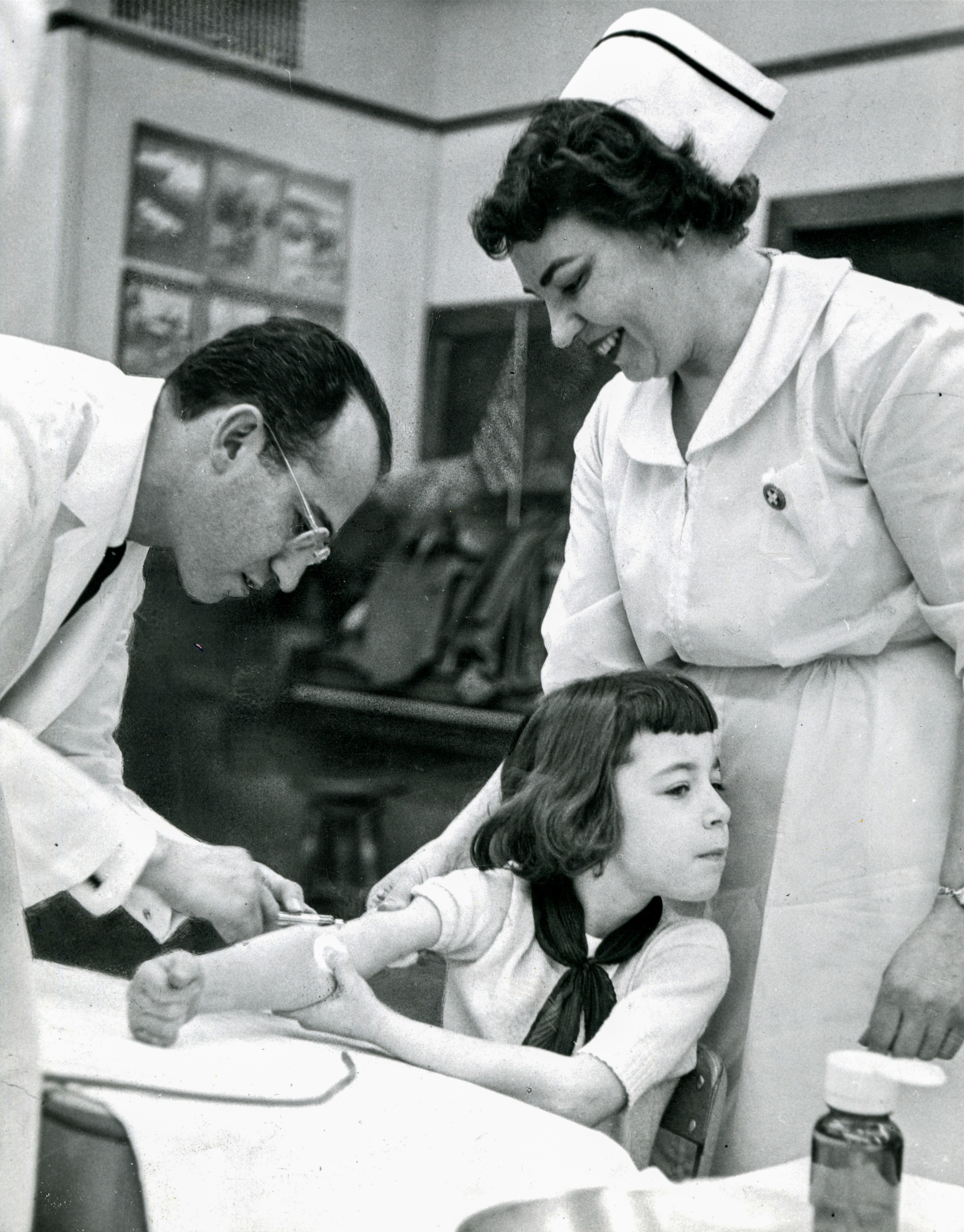
Dr. Jonas Salk inoculating a child for polio while a nurse looks on. |
National Library of Medicine |
|
1955The "Cutter Incident”More than 400,000 children received a polio vaccine from Cutter Laboratories, some of which had live polio virus instead of the inactivated (killed) virus. Nathanson and Langmuir reported in their article that the 400,000 doses of the Cutter vaccine resulted in 260 cases of paralytic polio in the spring of 1955. Several children died. There is some disagreement as to the number of Cutter vaccines distributed and the number of paralytic cases, but Nathanson and Langmuir and generally praised for their article and accuracy. In 1955, the year following a field trial that showed the Salk inactivated (killed) polio vaccine to be safe and effective, the National Institutes of Health (NIH) Division of Biologics Standards (DBS) licensed several firms to produce the vaccine. One, Cutter Laboratories, accidentally released vaccine that retained live polio virus, resulting in 260 paralytic cases of the disease, a disaster that caused panic among parents and scientists alike. The vaccine from Cutter Laboratories was pulled from the market on April 27, 1955, but the damage had already been done. There was fear around the polio vaccine for some time, but all vaccines were rechecked, and immunizations resumed on May 15, 1955. |
|
The previous year, in August 1954, Dr. Bernice Eddy had been testing a batch of polio vaccines from Cutter Laboratories and she noticed that the vaccine had given polio to a test monkey. She found that three of the six samples had paralyzed test monkeys. She knew something was wrong and brought it to the attention of her supervisor, Dr. William Workman. Because of the previous polio epidemics and the race to create a vaccine, Dr. Eddy and her team had been working around the clock testing the Salk vaccine. Amidst the scientific and bureaucratic chaos, Workman never told the licensing committee, and the Cutter vaccine was approved and shipped out. Dr. Eddy was relieved of her polio control testing duties in 1955 but continued to work in biologics. Not coincidentally, the Laboratory of Control Activities was formed—along with the NIH Division of Biologics Standards (DBS) itself—in the wake of the Cutter polio vaccine incident in 1955. The organizational response to that (biologics regulation existing independently within NIH as DBS) was likely related to the change in regulations regarding polio vaccine production as well. It was one structural way that the NIH recognized its biologics function should get more attention from the agency. In the years following the Cutter Incident, Dr. Ruth Kirschstein’s polio investigations paved the way for safer vaccines, both the killed vaccine and live, attenuated oral polio vaccine. She and her colleagues shed light on the pathogenesis of the polio virus and developed a standardized test involving precise, experimental inoculation of vaccine matter. It served as the basis for the testing DBS conducted on every lot of polio vaccine produced and the laboratory instructed vaccine producers and others that needed to know the procedure from around the world.
| 